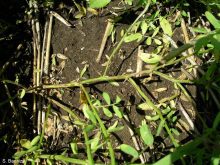A trickle from the research pipeline has become a faster trickle as new products with differing active ingredients and strategies reach the marketplace these past two seasons.
High moisture levels and im-proved plant genetics that result in heavier prairie crop canopies have caused many western Canadian producers to make use of fungicides in a way that was once generally reserved for pulse growers and those from southeastern Manitoba.
Xemium is part of the group of succinate dehydrogenase inhibitors (SDHIs) that restricts the respiration of fungal pests.
Read Also

Huge Black Sea flax crop to provide stiff competition
Russia and Kazakhstan harvested huge flax crops and will be providing stiff competition in China and the EU.
As a carboxamide it has the ability to move within the plant, unlike many other fungicides that work based on controlling disease at the location of an application.
While SDHI products have been around since the 1970s, new products have better abilities to control fungal development and be formulated to en-sure improved leaf wetting and surface spread.
Scott Chapman of BASF said the new product, while not packaged on its own, will also aid other fungicides in disease control and perform curative functions on already diseased plant tissues.
Pulse growers in Western Canada will be the first to experience Xemium, or fluxapyroxad, when it is delivered with Headline, or pyraclostrobin.
The new product will displace Headline Duo, or boscalid and pyraclostrobin, on the BASF lineup.
It will offer better application timing and a longer acting effect, as well as more control, said BASF.
It will eventually be packaged for cereals and other crops.
It has been shown to have an effect on blackleg, sclerotinia and alternaria in canola and scler-otinia, botrytis and mycosphaerella in pulse crops.
It is known to have an impact on rhizoctonia in some grasses and other plants and on blotches, scalds and rusts in barley and wheat.
The first registered uses are in soybeans, pulses, potatoes, tomatoes, apples, peaches and cherries.
Xemium will add value to existing fungicides and bring value through its own attributes, said Chapman.
The products are becoming available worldwide as part of an international approval process.
















